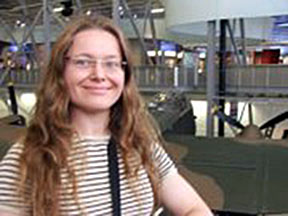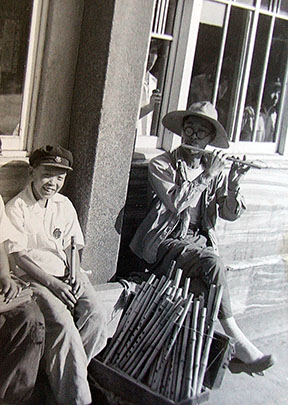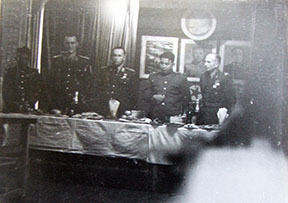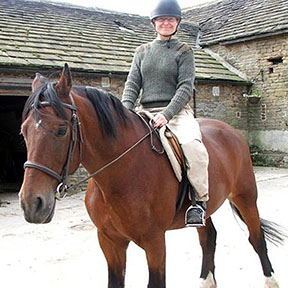|
Czechoslovakia
in Korean War
Veronika Valdova, DVM
Involvement
of Czechoslovakia in the Korean War is not widely known.
As a Soviet satellite, it participated on the side of
communist North Korea, under direct Soviet leadership, and their
most important contribution was one of the field hospitals.
The conflict in Korea was one of the ugliest small wars ever
fought by the US and UN and became known especially for the
stalemate it produced and large numbers of POW and MIAs who
were never accounted for and never exchanged. It is worth remembering
the
|

Veronika Valdova DVM |
|
The conflict
in Korea was one of the ugliest small wars ever fought by the
US and UN
|
numbers
[1]
. The number of dead Koreans and Chinese is estimated
around 2 million, both combat casualties and those who died of
disease. Of the 75,000 U.N.
and South Korean soldiers captured by Communist forces, only 12,000
returned home, leaving more than 60,000 unaccounted for.
|
|
|
Dead
|
Missing
|
Captured
|
Wounded
|
|
USA
|
54,246
|
8,177
|
7,140
|
103,284
|
|
UN
|
628,833
|
470,267
|
92,970
|
1,064,453
|
|

Click
image for larger viiew
Czechoslovakian
hospital in Korea
Image: Military Historical
Archive in Prague
|
Geneva Conventions
When the Korean War started in June 1950, Geneva Conventions
[2]
were still a very fresh document, signed by all participants
immediately after the conference and ratified by many soon after,
including Czechoslovakia. Geneva Conventions are inseparable from
the Red Cross. Who read them, all four, including commentaries
and final report, knows that it is a long text to read and even
longer text to translate.
On the other hand, U.S.A. fully implemented Geneva Conventions
in the Army Field Manual 19-40 in November 1952
[3]
. It is not surprising then that when Czechoslovakia
was moving to Korea with their hospital, full text of GCs was
still not available for distribution to other ministries and staff,
not even thinking about general awareness among military and civilian
medical personnel sent to Korea. Ministry of Justice distributed
Czech translation in January 1950. How this translation looked
like is a good question because from what is available in the
military archive, the Russian text is considerably shorter than
the original.
In October 1952, Ministry
of Defense created a commission on implementation of GCs,
apparently in reaction to
British enquiry |
|
on
their implementation from August 1952. When the war ended, Czechoslovakia
was nowhere near implementation of GCs in their Criminal Code,
and awareness of the text itself among those who were in the
war zone was extremely limited.
[4]
A
historical survey “Communist treatment of prisoners of war”
presented in U.S. Senate in 1972 mentioned that literally all
articles of GCs were violated. Atrocities committed by the communists
during Korean War were described in detail in report 848 Korean
War Atrocities
[5]
and Report 2832 Indoctrination and exploitation
of American Military and Civilian Prisoners
[6]
. Gen. Ridgway called it a “calculated criminal misconduct
which meant to exterminate the POWs one way or the other”. Report
on Korean War atrocities
[7]
concluded that North Korean and Chinese Communist
Armies were guilty of the following war crimes and crimes against
humanity: murder, attempted murder, malicious and aggravated
assaults, various acts of torture, starvation, deliberate policy
fostering starvation, experimental medical operations, coerced
Communist indoctrination, and bayoneting.
Indoctrination of own staff
|

Click
image for larger viiew
Czechoslovakian
hospital being built from scratch
Image: Military Historical Archive in Prague |
T he Communists paid lot
of attention to indoctrination of their own personnel. The time between
Communist Coup in Czechoslovakia (1948) was sufficient to throw many
experienced people out of medical schools and take advantage of young
and inexperienced fresh graduates. Age of doctors who participated
in the mission was limited to 35 years. Shortly before the Czech engagement
in Korea, Military Medical Academy in Hradec Kralove was established,
and Czechoslovakian military medicine was re-organized from scratch.
The

North Korea
Click image for larger viiew
|
hospital was
placed directly under Soviet leadership. At that time, major
focus of Czech military research at home went into defense
against biological, chemical, and radiological warfare. It
should not come as a surprise that the Czechs were convinced
that not only the other side was likely to use these weapons,
but they in fact believed they were actually used
[8]
. The only reading permitted on site was hard-core
communist literature and certain Soviet medical books.
As per witness statement of Gen. Jan Sejna and analysis
of Dr Joseph Douglass, some of these prisoners were taken
after the war to Czechoslovakia and experimented on in Central
Military Hospital in Prague - Stresovice and in Institute
of Aviation Medicine, under the scientific oversight of Czechoslovakian
Academy of Sciences,
|
and eventually shipped to the Soviet
Union.
Czechoslovakian participation in the war
Apart
from diplomatic mission in North Korea and China, Czechoslovakia participated
in Repatriation Commission of Neutral States (RKNS) and in Supervisory
Committee of Neutral States (DKNS). In February 1952, Central Committee
of Czechoslovak Communist Party decided to send a field hospital to
North Korea, and about a month later, 29 Czech medical professionals
led by Dr Bartak left for Sogam. The hospital originally only treated
military personnel, but after allied bombing which killed about 5.000
people and wounded another 5.000, they also started accepting civilian
casualties. This raid also killed about 100 U.S. POWs who were accommodated
in the hospital. The hospital was located around village Chondzin,
scattered over area about 15 km, 25-40 km north from Pyongyang, hidden
in valleys around a river and with evacuation
|

North Korean street
traders
Click image for larger viiew
|
access
route to China which was only 120 km away. Second group of Czech
doctors led by Dr Placak got to Sogam in March 1953, at a time
when the hospital was moving to Osanri in North Pchenan province.
After the armistice, the hospital was handed over to the Koreans.
Because
the hospital was located about 200 km north from the frontline,
Czech doctors were not dealing with fresh casualties but mostly
with reoperations and non-war-related illnesses. Casualties
from frontline were evacuated first to a Korean field hospital
where they received primary care, and then from one hospital
to another further and further away from the frontline. Capacity
of the Czechoslovak hospital in June 1952 was about 500 patients,
and admissions ranged from 20 to 60 a day. Average hospital
stay was 39 days. The archiving material which is available
does not contain any detailed reports of individual medical
cards or exact numbers of medical procedures per day but only
summary charts per month. From these summaries it is impossible
to distinguish Communist war casualties from Allied personnel;
military from civilian; and war-related from other.
Bureau for Documentation and Investigation
of Communist Crimes (UDV)
[9]
looked into this matter in detail and came to a
conclusion that allegations of Gen. Sejna are unsubstantiated
and there is no evidence of mistreatment of U.S.
|
POWs
in Czechoslovakian hospital in Korea or later on Czech soil. Recently,
Military Historical Archive in Prague declassified large number of
documents from this period
.
Analysis of lists of medical supplies, treatment procedures, organizational
charts, and training materials, can potentially bring more light into
nature of medical procedures undertaken in the hospital in both qualitative
and quantitative terms. The hospital did receive drugs such as scopolamine
and thiopental which were at that time used as experimental truth
serums. To tackle malaria and other insect-borne diseases, the Czechs
used large amounts of DDT, which has significant cumulative toxicity,
especially to the nervous system.
Domestic
research at that time was heavily focused on defense against bacteriological,
chemical, and radiological warfare; mass treatment of casualties in
transportation vehicles with oxygen; experiments with chemical mines;
and identification of specific antidotes against chemical warfare
agents.
| Doctors
in Czechoslovakian field hospital in Korea performed large numbers
of operations which are not specified in sufficient detail, but
the training materials from Soviet Union and surgical equipment
used suggest that these were mainly ostheosynthesis and experiments
with bone transplants and skin grafts. These techniques were relatively
new at that time, even though not impossible to perform with experienced
staff in a hospital with aseptic operation rooms and adequate
follow-up care. Unfortunately, this was not the case of the field
hospital which suffered greatly from shortage of antibiotics,
and far from optimal sanitary conditions. Outcomes of these operations
are hard to establish because there are no records to examine. |

Unknown Delegation N Korea 1954
Click image for larger viiew
|
[6]
"Communist Interrogation,
Indoctrination and Exploitation of American Military and Civilian
Prisoners" (December 1956, Report No. 2832). Available at Military
Legal Resources.
[7]
Committee
on government operations; Permanent subcommittee on investigations;
Subcommittee on Korean War Atrocities: Report Korean War Atrocities.
Senate Resolution No 40.
|






